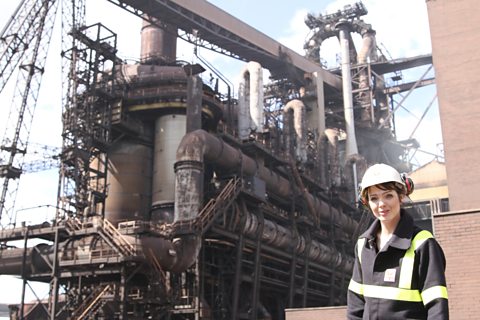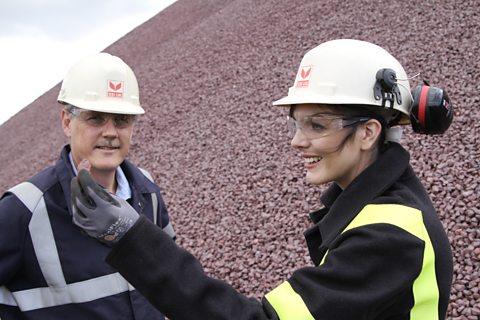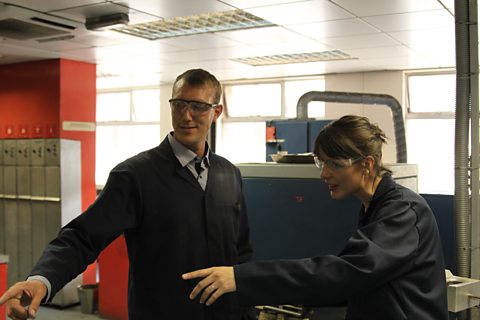Fran Scott learns how glass is made in a factory.
The raw materials are described, together with the use of soda ash to lower the melting point, making it easier to form into useful shapes.
The production process is described including the use of gas burners to maintain the high temperature.
Automated equipment is used on a continuous production line that works at very high speed to produce glass bottles.
Finishing processes include adding a coating to improve strength, heating and slowly cooling to remove weaknesses and another surface treating to make them harder and more resistant to scratching.
Quality control mechanisms are described.
Teacher Notes
Teachers can also refer to the Mark Miodownik clips from the 91Čȱ¬ series 'Materials: How They Work'.
Students can be given a list of questions for them to answer whilst they watch the clip that focus on your intended learning outcomes.
Students could be asked to suggest why the factory works 24 hours a day, 365 days a year.
Curriculum Notes
These clips will be relevant for teaching Science and Chemistry at KS4 in England, Wales and Northern Ireland and National 4/5 in Scotland.
The topics discussed will support OCR, Edexcel, AQA, WJEC GCSE in England and Wales, CCEA GCSE in Northern Ireland and SQA National 4/5 and Higher in Scotland.
More from Real World Chemistry
How is plastic made? video
Science presenter Fran Scott visits a company that makes PVC to find out how you turn raw materials into the every day plastic goods that surround us.

How is paint made? video
Fran Scott goes on a tour of a paint factory and the ingredients for oil and emulsion paints are discussed and how they are made and tested.

How is iron extracted? video
Fran Scott visits a blast furnace and explains the science behind iron production from the raw materials through to the finished metal.

How is steel made? video
Fran Scott explains the science behind steel production from the raw materials through to the finished metal.
